Wholesale Ecommerce: Benefits of B2B Selling (How to Start & Examples)
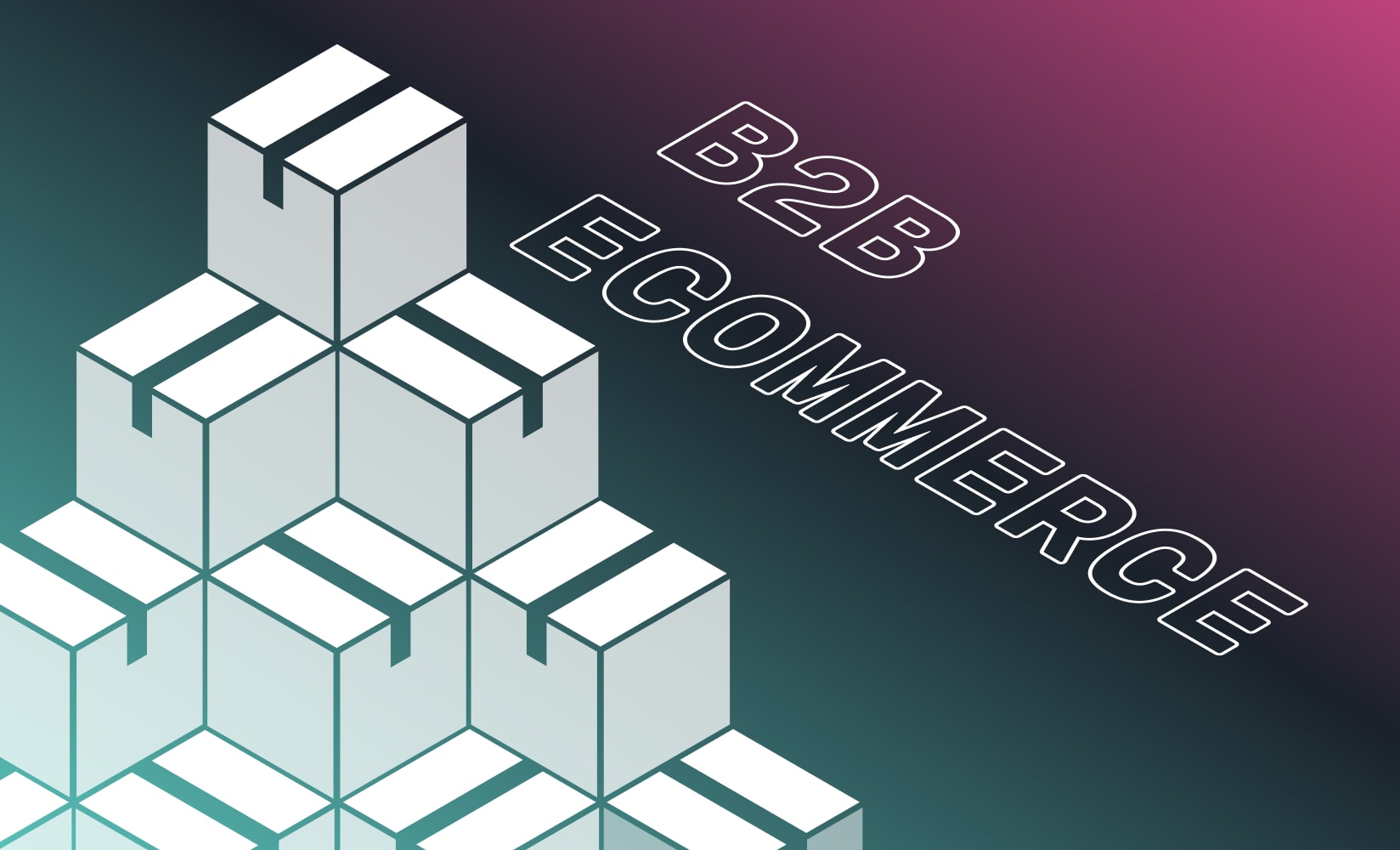
Wholesale ecommerce is expanding rapidly. The value of B2B transactions in 2020 was $9.92 trillion(!), and it’s set to expand even further.
If you already run a successful online brand, chances are you’re finding a way to expand into this market or have already made the leap.
But as you explore wholesale solutions and expand B2B sales, how do you maximize your chances of success?
Here, we’ll look at the benefits, drawbacks, and practicalities of becoming an ecommerce wholesaler.
We’ll also walk through how you can adjust your ecommerce website experience for a B2B wholesale audience, plus share some real-life examples from brands who’ve expanded this way.
Scroll to learn more or skip directly to what you need to know below:
- What is wholesale ecommerce?
- What are the different types of B2B wholesale?
- The state of wholesale ecommerce today
- The benefits of selling B2B wholesale
- Drawbacks of wholesale ecommerce
- Criteria of a good wholesale ecommerce site
- Examples of B2B wholesale ecommerce websites
What is wholesale ecommerce?
Before diving into how you start as an ecommerce wholesaler, it’s best we lay the groundwork for what B2B wholesale actually means.
Wholesale means you sell goods in bulk rather than individually retailing items.
Further, B2B refers to business-to-business. So B2B wholesale refers to buying or selling bulk orders to and from other businesses.
The economies of scale involved in bulk selling allow wholesalers to offer goods cheaply to mass retailers, who will then mark up the price.
So there’s initially a discount upfront for the B2B or wholesale buyer.
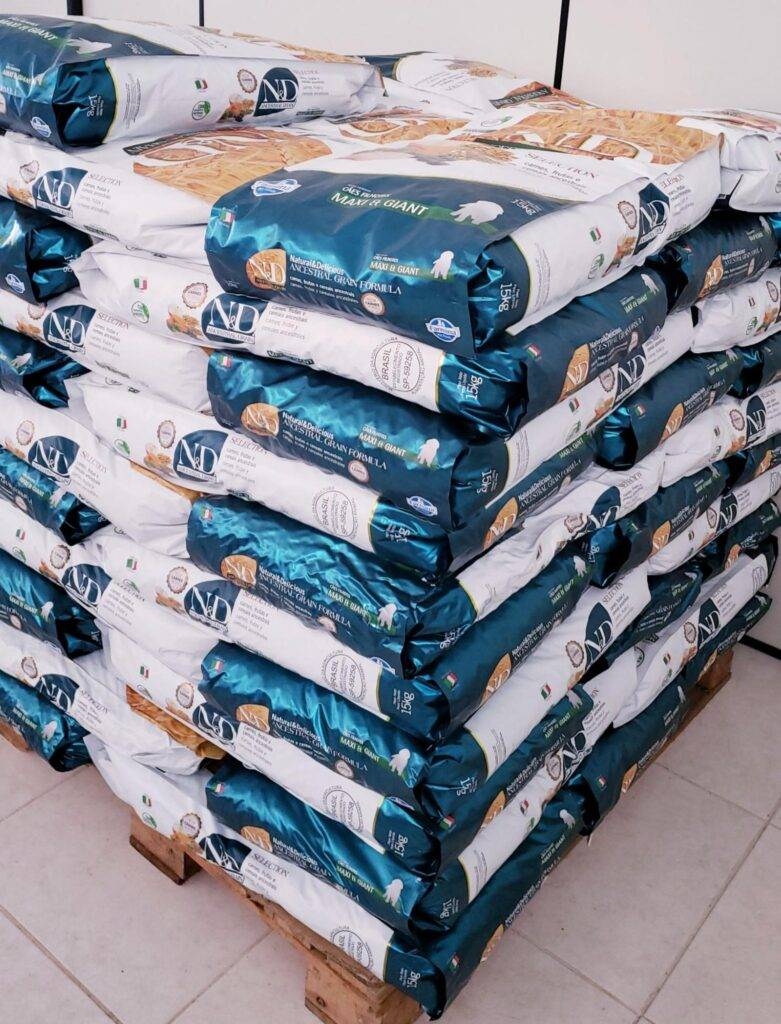
Wholesale ecommerce takes the whole process online.
Wholesale customers are—for the most part—other businesses, so their underlying needs are different from what retail customers want from ecommerce.
Where individuals shopping for themselves value a story or brand ethos, someone buying on behalf of a company often needs to navigate your site as quickly as possible. Their intention is to resell products or to source a manufactured component for the products they’ll be selling.
Even though serving these two types of customers means providing two different shopping experiences on your ecommerce site, it’s entirely possible to become a wholesaler, even if you’ve never done B2B selling before.
Many brands even experiment with wholesale first—without requiring an entire upfront commitment to an entirely separate website, which we’ll get into later.
Note: Wholesale ecommerce, as we'll cover throughout this article, involves, but is different from, the process of sourcing inventory from wholesale suppliers. To learn more about that and the best online wholesale suppliers, check out our comprehensive guide to wholesale vendors and suppliers.
#cta-visual-pb#<cta-title>Experimenting with wholesale?<cta-title>Design a new password-protected area of your site quickly—or build a new storefront—to move forward with this approach.Try Shogun Page Builder
The different types of B2B wholesale
So selling wholesale to other businesses is a different business model to DTC retail. But even within the B2B wholesale landscape, there is a range of different types of sellers.
For instance, you may work with:
Wholesale manufacturers
This refers specifically to when manufacturers sell their products in bulk to other businesses .
The businesses they sell to can be other manufacturers who need a component part of their own product, other wholesalers who will sell the bulk product to retailers, or in some cases, D2C retailers.
Wholesale distributors
Not to be confused with manufacturers, wholesale distributors specialize in warehousing and fulfillment.
They have invested heavily in these areas and are set up to store and ship large volumes of goods—something that manufacturers might not be in a position to do.
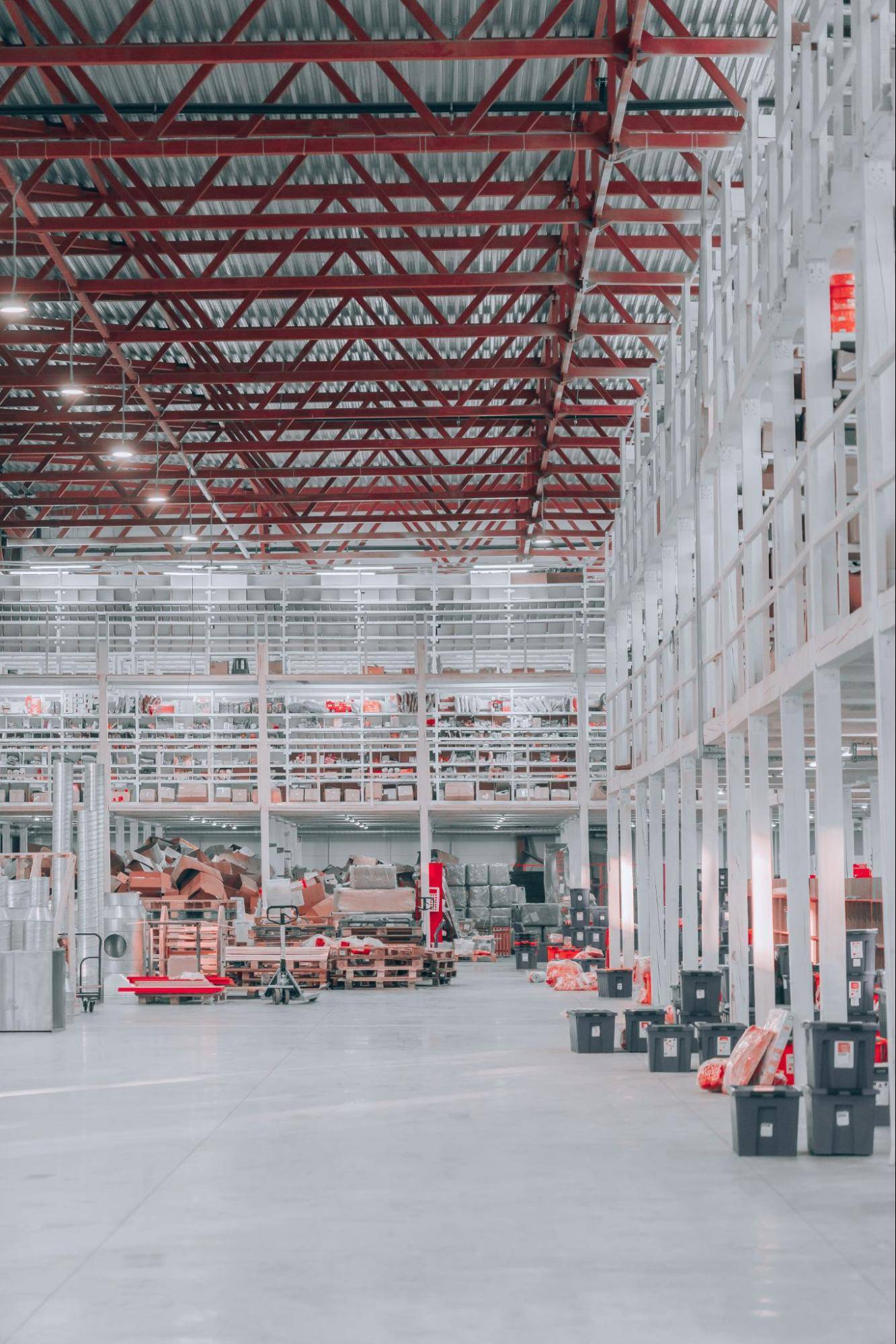
Wholesale agents and brokers
Similar to distributors, agents and brokers work in between the buyer and the seller, connecting the two together and organizing deals.
Agents often work for one of the companies involved, while brokers receive payment for putting deals together.
Dual business model
With the rise of ecommerce, the distinction between B2B and B2C is starting to dissolve.
Online businesses can offer both direct-to-consumer (DTC) retail and business-to-business wholesale options, often within the same site.
B2B2C is an alliance of a B2B business and a B2C business that allows both parties to leverage the others’ strengths, while some online retail brands have started branching out by developing B2B sections of their sites that are account-based and inaccessible to their retail consumers.
Wholesale marketplaces
While not wholesale sellers themselves, wholesale marketplaces provide another very popular channel for those wishing to sell to other businesses in bulk without needing their own website.
Alibaba, DHGate, Wholesale Central, and Global Sources are just a few popular examples.
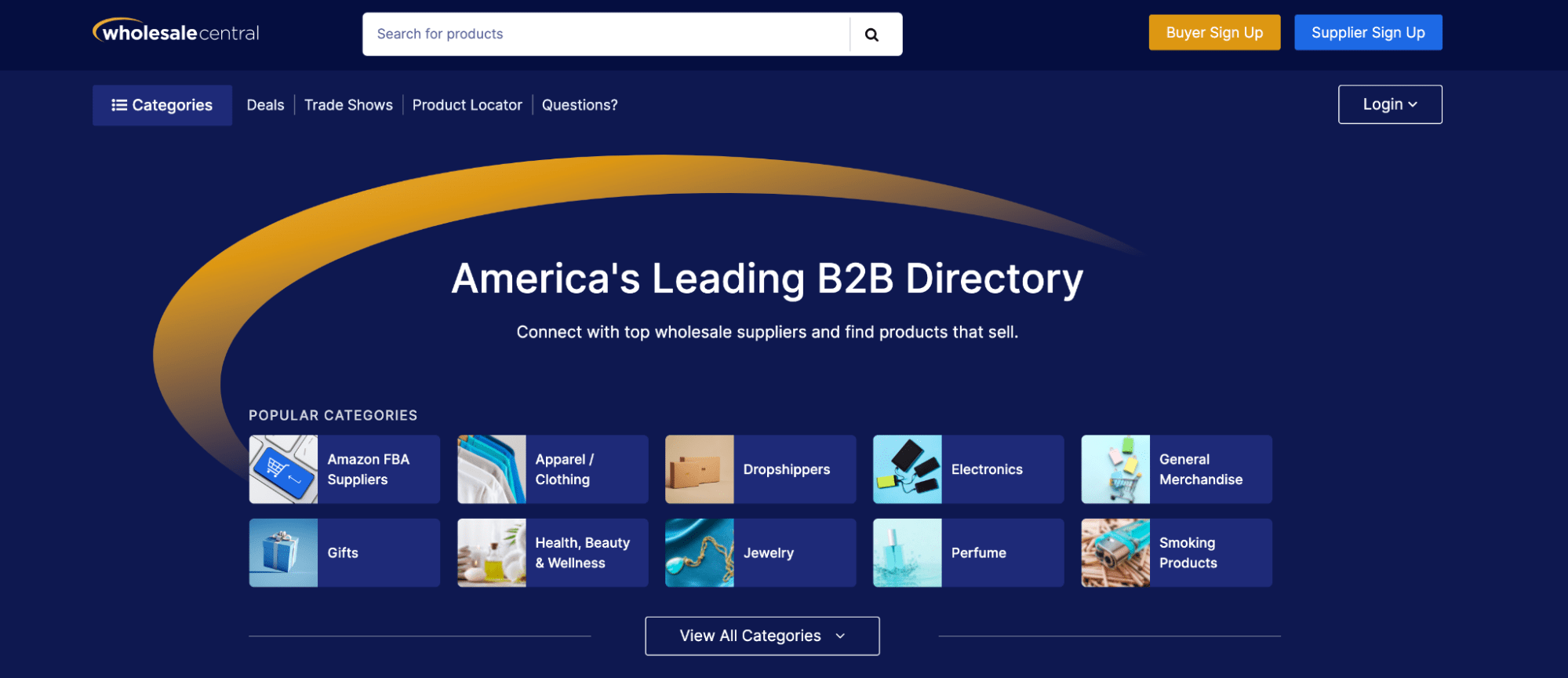
Increasingly, all these types of B2B wholesalers operate online and need a strong ecommerce suite of services to attract and retain customers and facilitate sales.
Wholesalers that build their own storefronts can get ahead of those that do not, and they are rewarded with increased profits.
The state of wholesale ecommerce today
With the post-pandemic shakeout in supply chains and resurgent demand, B2B wholesalers have had their logistics and shipping capabilities tested to the breaking point.
Many are now starting to get on top of these issues, but supply chain concerns are still top of the list of problems facing wholesalers.
While some B2B wholesalers still rely on outmoded forms of ordering and processing, there has been a big shift by wholesalers and brands toward using technology to counter supply chain disruption and logistical challenges.
92 percent of brands now say B2B software is their main way of managing orders.
The other main trend in wholesale ecommerce is the move toward a B2C-like buying experience from B2B customers, with a big emphasis on the customer experience.
Customer-facing brands with the experience and technology on hand to provide these digital experiences are taking advantage of this, with 60 percent of revenue for enterprise brands in 2022 coming from wholesale.
Add these things together, and it’s clear that online sellers looking to expand into the B2B space need the assistance of a fully functioning B2B commerce platform.
The benefits of selling B2B wholesale
If you can make it work for your ecommerce business, there are several benefits to becoming an online wholesaler.
To start, with wholesale orders, you can:
1. Reduce purchasing costs
As you’ll be selling in bulk, you’ll need to buy in much larger quantities. Bigger orders translates to volume discounts.
This means you can pass these savings on to customers, prompting increased sales.
If you’re also running a retail ecommerce store, you may be able to cut out the middleman on some products—another cost-saving deal.
Some manufacturers will only sell to wholesalers, so if you become a wholesaler, there’s potential to boost margins on retail goods too.
2. Reduce shipping costs
Fulfillment of a bulk order of one product to your wholesale customer is much cheaper than shipping several orders of different, individual items.
It also means fulfillment is less complicated for your warehouse team.
3. Increase access to markets & brand awareness
If you want to reach more customers, teaming up with a retailer with an established customer base is a great way to do it.
It means you don’t have to make the same investment in marketing to increase awareness, since there’s already a partner in place with a vested interest in selling your products.
Teaming up with retailers who’ll go out and market on your behalf means you’re on more people’s radars.
A good example of this in action is with TNT Fireworks.
They rely on the local businesses they wholesale with to provide marketing and publicity for their brand by setting up fireworks displays.
The stores increase their sales this way, and TNT Fireworks gets to concentrate on the supply and distribution of their specialist product.
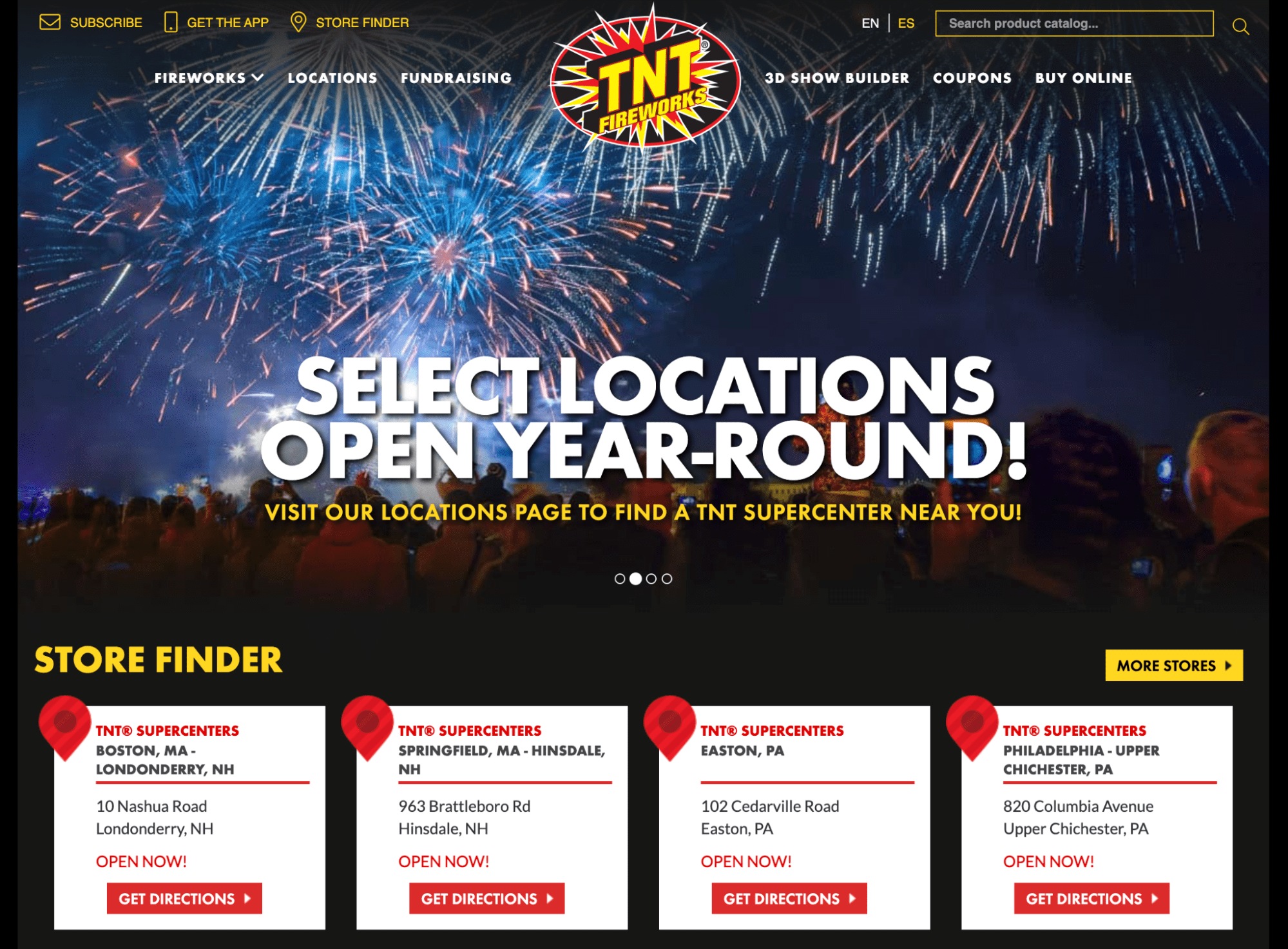
4. Experience more rapid growth
The increased product visibility means you can grow into new markets quickly.
You can likely expand your customer base far faster than you would if you were operating solely as a retailer and trying to incrementally grow.
Potential disadvantages to wholesale ecommerce
Unfortunately, it’s not all roses!
There are a few potential downsides to watch out for when expanding as a wholesale business, including:
A lack of control
The growth and brand awareness benefits notwithstanding, you may not want to hand overall control of your marketing to another company to take care of.
If you’ve spent years building a consistent brand image or direct-to-consumer brand that relies on differentiation, you may want to think twice about farming out too much of your retail operation to third parties.
A wholesale arm can be the right move if you’ve already built a strong brand presence online.
This way, even if other retailers are also marketing your products (think: Target or REI, for example), you can share documented brand guidelines to pass along that can help ensure your branding stays on point.
Ultimately, pay close attention that the retailers you supply to maintain good fulfillment practices and customer satisfaction to maintain your existing brand equity.
Potential customer confusion
Displaying a retail and a wholesale price on the same product page is confusing to both sets of customers (B2B and B2C) and is generally not recommended, so you’ll want to keep things separate for your wholesale customers.
If you decide to sell wholesale, you’ll want to maintain a separate space on your ecommerce site for your retail B2C customers.
This could be in the form of a completely separate site—which you can customize to the needs of retailers.
Alternatively, you can create a wholesale or B2B portal on your existing site (often requiring the use of a password to access) or use a wholesale marketplace.
Getting your pricing right
Juggling two sets of customers with different needs means you need to keep a close eye on your pricing strategy.
You don’t want to retail so low it will drastically undercut the companies you’re supplying to, but you also need to make sure you’re offering great value to your loyal DTC customers.
This can be a tricky balance.
Before you make the leap and invest in wholesale inventory, do the math and understand your margins to know whether you can sustainably support the initiative.
How B2B wholesale platforms can help
Should wholesale be a good fit for you, you’ll likely begin shortlisting ecommerce platforms for wholesalers. For this, you can check out our list of the best B2B wholesale platforms.
When you’ve evolved to need this, scaling to use a platform with greater capabilities allows you to:
- Nurture relationships with greater customer convenience & access. A platform will often help you facilitate B2B buyers being able to quickly check the status of orders, and you’ll receive notifications for reordering inventory specific to this arm of the business.
- Individual portals or areas help your wholesale customers save time and hassle (think profiles that help with repeat orders or similar-product recommendations).
- With a platform in place, automating these types of orders, you can reallocate time saved by doubling down on more comprehensive customer service.
- Grant mobile access. As a B2B trend generally, shoppers are increasingly buying via mobile devices. Facilitating a smooth, mobile-optimized user experience is key, and a platform can help with this.
- Get a 360 view of customer data. Selling through a B2B customer portal allows you to get a more accurate view of your customers with increased data. With site analytics gathered in a B2B wholesale platform, you can see what’s working well and any points of friction.
#cta-paragraph-pb#Building a shortlist of B2B ecommerce platforms? See our list of the best B2B ecommerce platforms.
Expanding: Your owned B2B site experience vs. marketplaces for wholesale
So you’ve done your homework, researched B2B wholesale suppliers or manufacturers, and even started to put the feelers out to potential customers who want to buy from you in bulk, but how do you get the web aspect of wholesale ecommerce right?
There are a few things you need in place to succeed.
First of all, you need to decide where you’re going to sell. It could be through your own site, via an online marketplace or directory, or both.
If you decide to sell from your own site, make sure you have a robust B2B ecommerce platform that can handle the special pricing and order processing requirements of wholesale customers.
If you decide that a marketplace is the way to go, you can apply to become a wholesaler on many of the top B2B wholesale marketplace directories.

One advantage of using your own site for your wholesale arm is the ability to leverage SEO and content marketing. You can own your marketing and make a name for yourself to rise above the noise of those lost in the marketplace din.
If you’re already a respected, authoritative brand voice in your retail niche, using that SEO juice to power your B2B rankings is a worthwhile strategy.
#cta-visual-pb#<cta-title>Craft an ecommerce site that grows with you<cta-title>Use the best page builder for Shopify to craft high-converting shopping experiences that scale with your brand.Learn more
What you need from a good wholesale ecommerce site
If you’ve put off launching a wholesale business because you’ve built a strong DTC brand and don’t think you understand the needs of B2B customers, reassuringly, they’re not all that different.
Of course, someone re-ordering stock on behalf of a company has a different intent to someone browsing for a new pair of jeans.
But both buyers have the same expectations of shopping online—a clear, fast-loading, personalized user experience, and convenience.
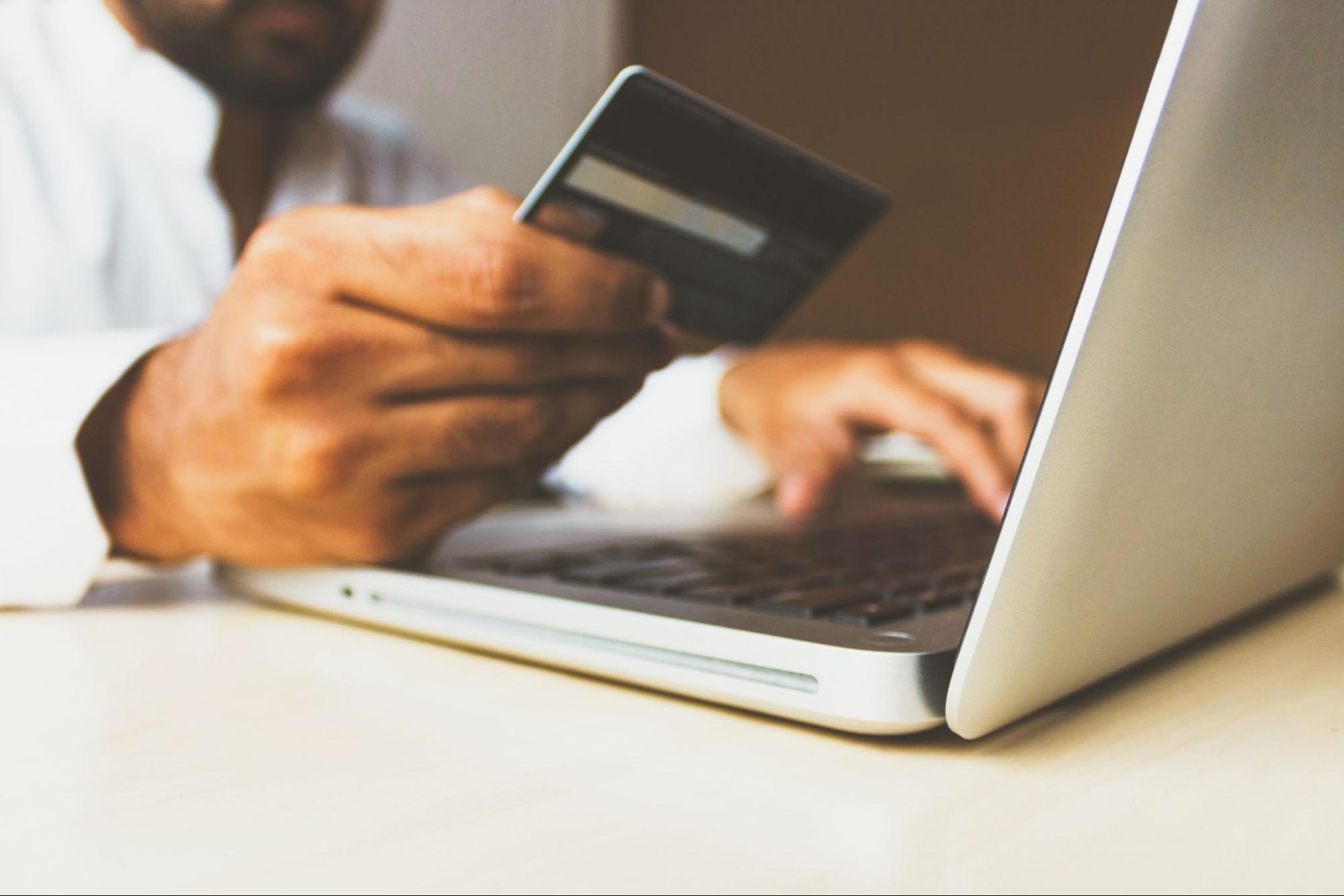
Here are some specific characteristics of a wholesale ecommerce site design that will help you attract and retain customers:
- Simple site design. Wholesale customers value a clear, simple process. They need a site where you can source products quickly at competitive at-a-glance prices with minimal fuss.
- Clearly signposted offers and incentives. You’re in the business of selling in bulk, so it’s a good idea to encourage your customers to buy as much as possible.
- Providing discount codes, preferred pricing for big orders, and other special offers can help with this.
- Try adding a pop-up message to a B2B-specific landing page and test out how advertising discounts on landing and product pages affect sales.
- A password-protected portal. B2B customers need secure, individualized accounts to place and check often complex orders. Organizing your wholesale customers in this way helps you to streamline your inventory and order management. An area dedicated to wholesale customers allows them to see their previous orders and reorder stock quickly.
- Stellar search functionality. Serving more sophisticated B2B customers doesn’t mean you can get away with a rudimentary search function. Retailers may know what they’re looking for, but there’s still huge value in serving up timely and relevant search results—especially when dealing with large catalogs. Offer sophisticated filtering options or NLP (Natural Language Processing) search to help keep things relevant.
#cta-visual-pb#<cta-title>Is it time to start your wholesale biz?<cta-title>Quickly build out a wholesale storefront with consistent on-brand design, without messing with code.Try Shogun Page Builder
Examples of wholesale B2B ecommerce websites
One of the best ways to determine if wholesale ecommerce is an avenue for you is to see solid examples of it in the wild, working for other B2B brands.
Below are a few examples that’ll help you determine whether opening a wholesale arm might be a good fit for your stage of growth or give you inspiration for B2B site design:
Sister Bees
Sister Bees is a lifestyle brand that sells beeswax products. They have a separate site for the retail and B2B wholesale arm.
Doing this as an ecommerce supplier can help maintain a healthy separation of your two customer bases, but it doesn’t mean you have to dilute your core messaging.
You’ll notice Sister Bees:
- Maintains consistent branding across its retail and wholesale sites, making wholesale B2B customers understand there’s an existing brand with a core look and (critically) an existing audience for these successful products.

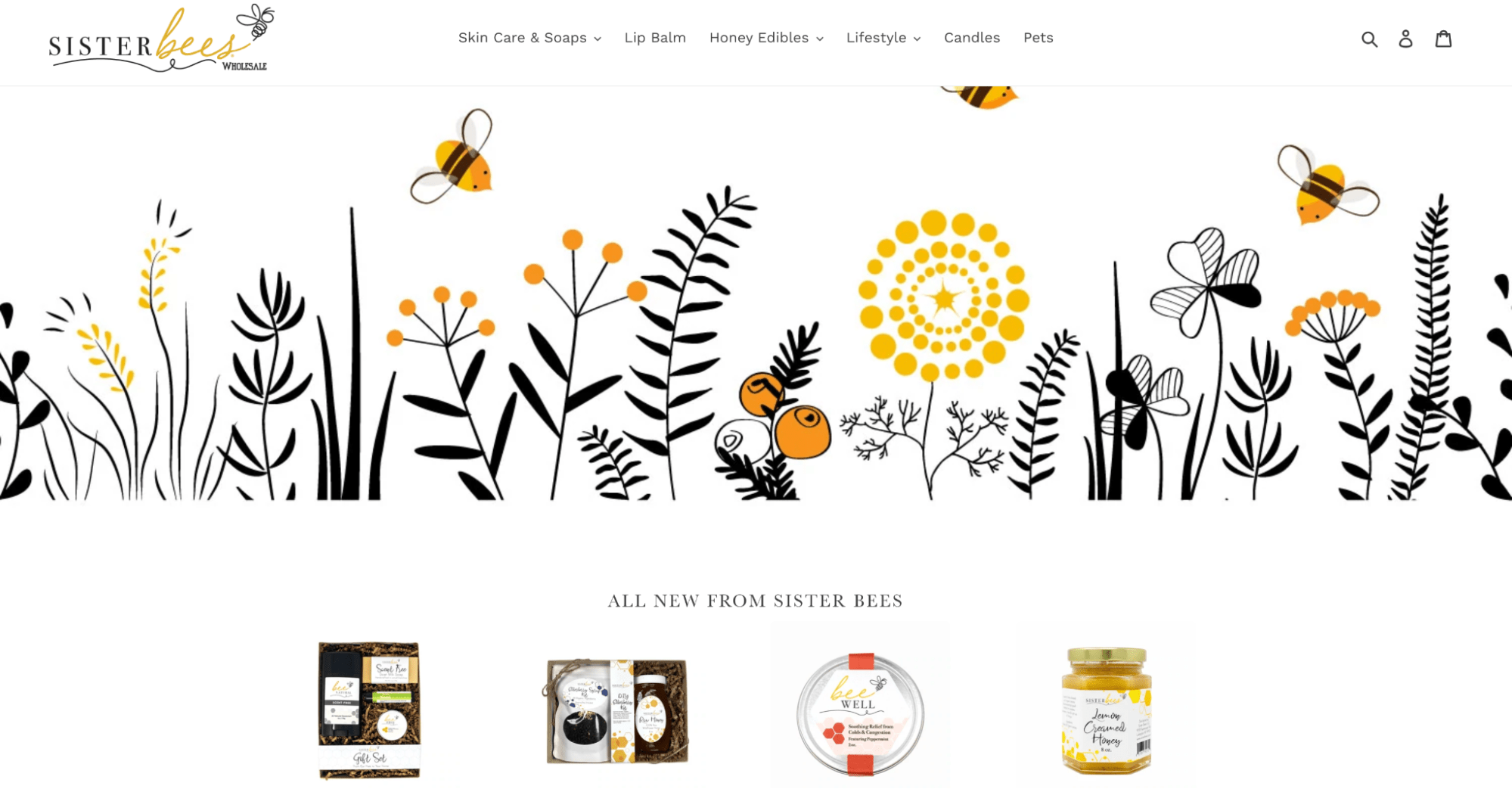
- They also display a pop-up on the homepage encouraging wholesale customers to leave their phone number and email in exchange for a discount.

Copper Cow Coffee
This Shark Tank alumnus (and sustainable coffee brand!) has a simple, straightforward layout for their site’s B2B wholesale section.
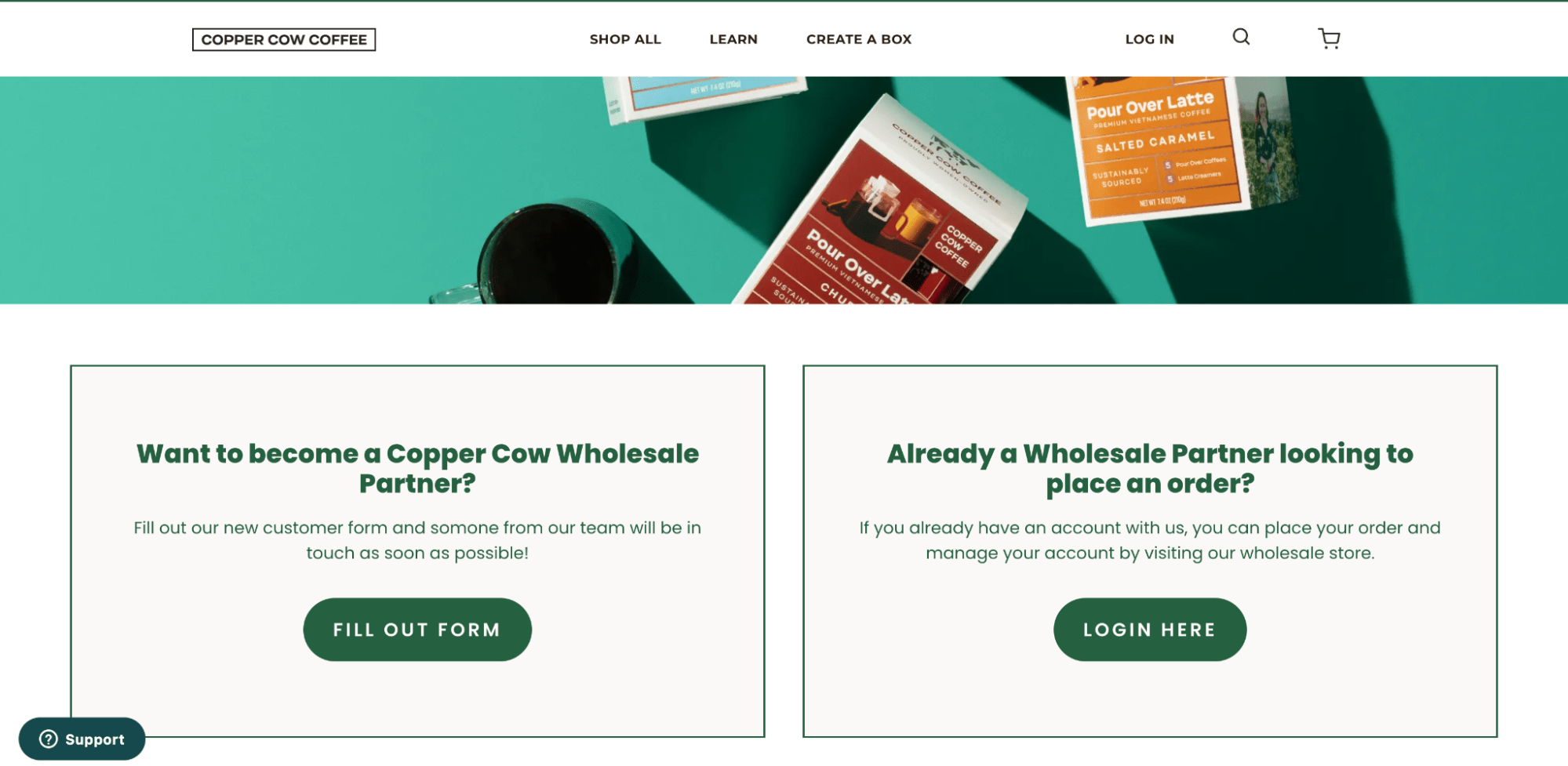
- On the landing page for the wholesale section, there are two clear options for either signing up or logging in as a wholesale B2B customer.
- The straightforward site navigation is a boon to retailers looking to order stock during a busy workday quickly.
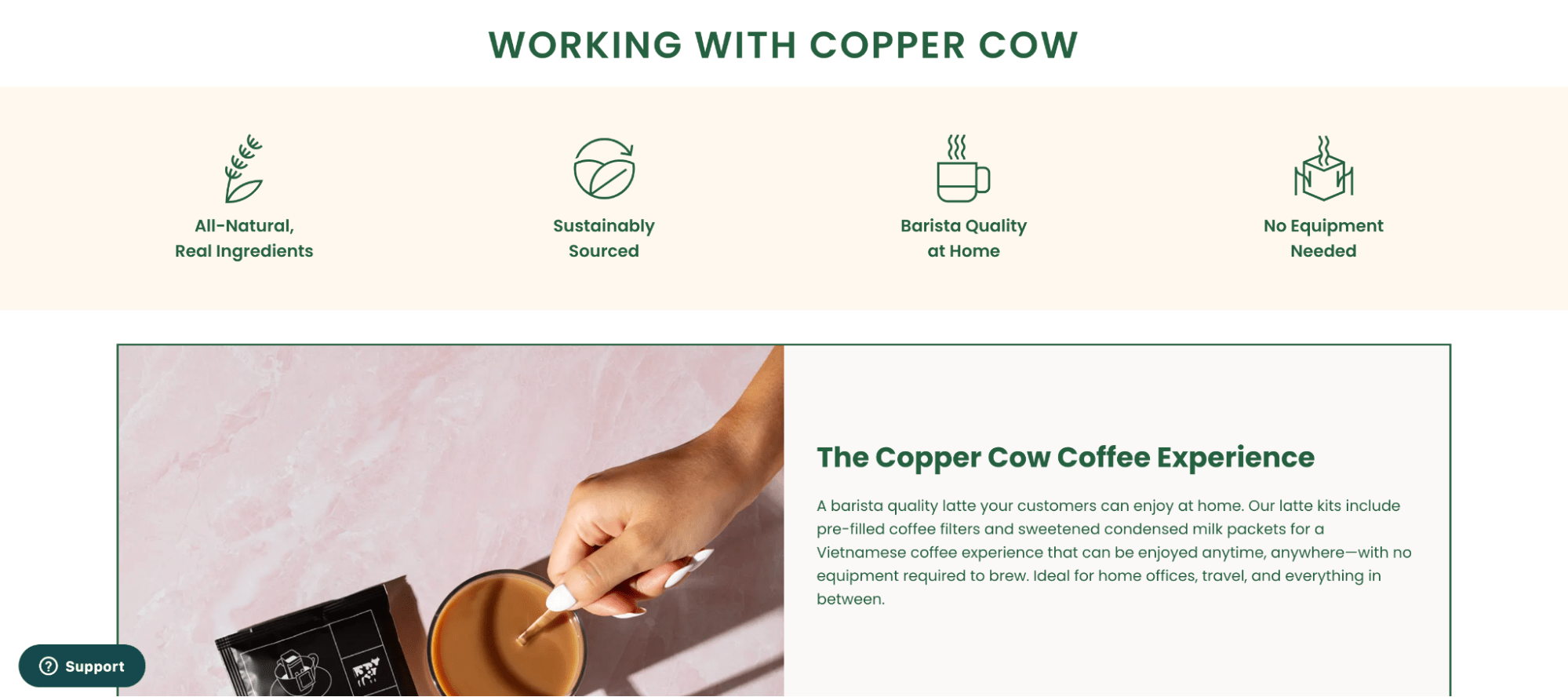
Even though this section of their site is aimed at the wholesale market, Copper Cow is still careful to craft on-brand messages about sustainability and naturally sourced ingredients.
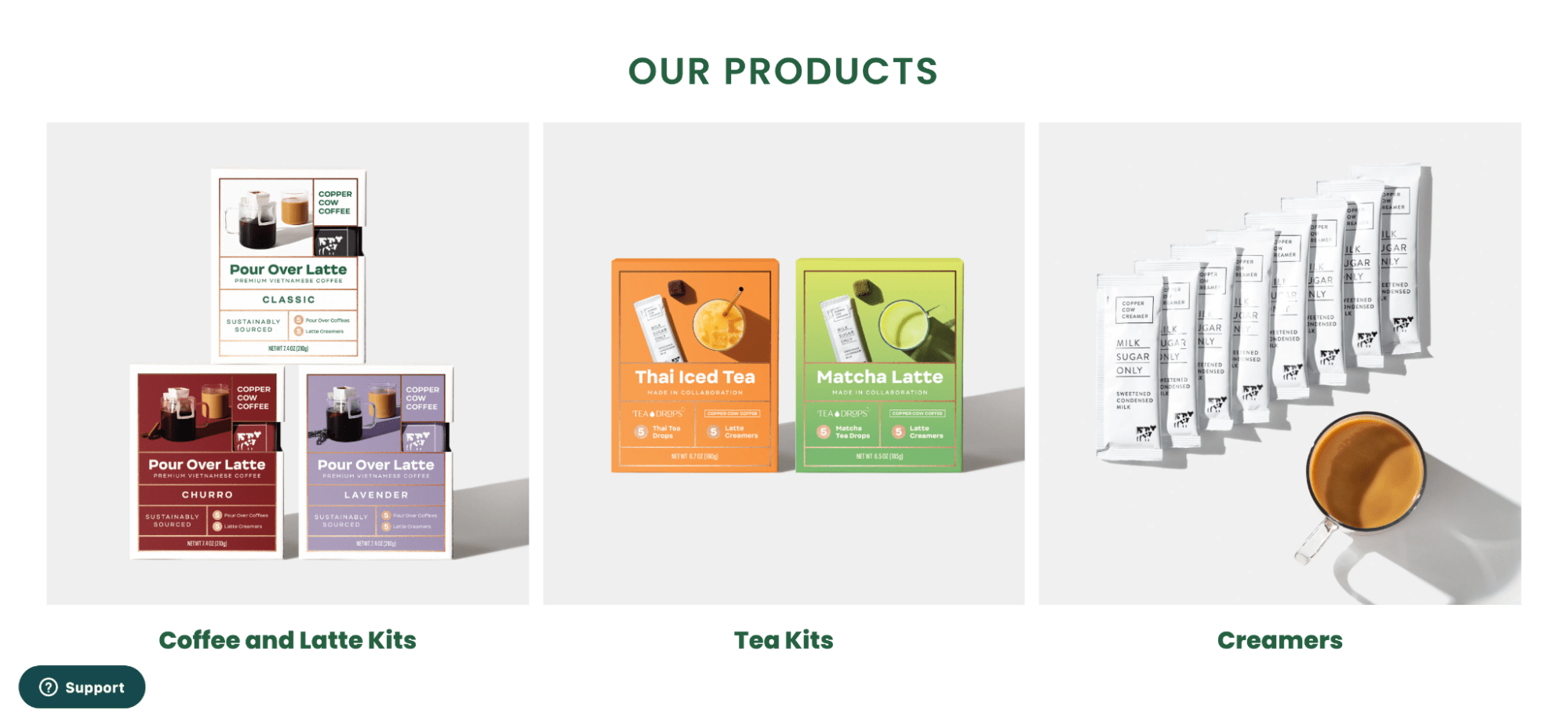
Their products are showcased in an accessible way, and the site strikes a balance between showcasing what makes them unique and providing at-a-glance product choices.
#cta-mini-pb#See more incredible stores.Well-crafted B2B website examples
Craft your wholesale commerce experience for B2B
Whether wholesale or retail, you still need to create breathtaking experiences for your customers, with instantaneous page loads that don’t slow down with added video, animation, and images.
With wholesale, your two sets of customers will have different requirements and expectations while visiting your site, so you can experiment as you scale.
To experiment with wholesale to start, try sectioning off a password-protected portion of your store for wholesale customers.
This way, you can provide the immersive digital experiences your DTC customers want and the speedy, easy-to-access service that your wholesale customers need.
You can also use the link to the password-protected B2B wholesale area in the footer of your site to initially gauge early interest in this arm of your business.
Ultimately, both groups (B2C and B2B) want a fast, smooth experience on your ecommerce site, and Shogun can help you deliver!
#cta-visual-pb#<cta-title>Want to get into wholesale?<cta-title>Start a password-protected area of your site—or build a new site altogether—quickly to see that sweet B2B revenue pour in.Try Shogun Page Builder

Rhys Williams
Rhys is a writer specializing in enterprise software, ecommerce, and SaaS. He describes himself as a geek and a wordsmith and relishes making complex, technical topics come to life in easy-to-understand web copy.



